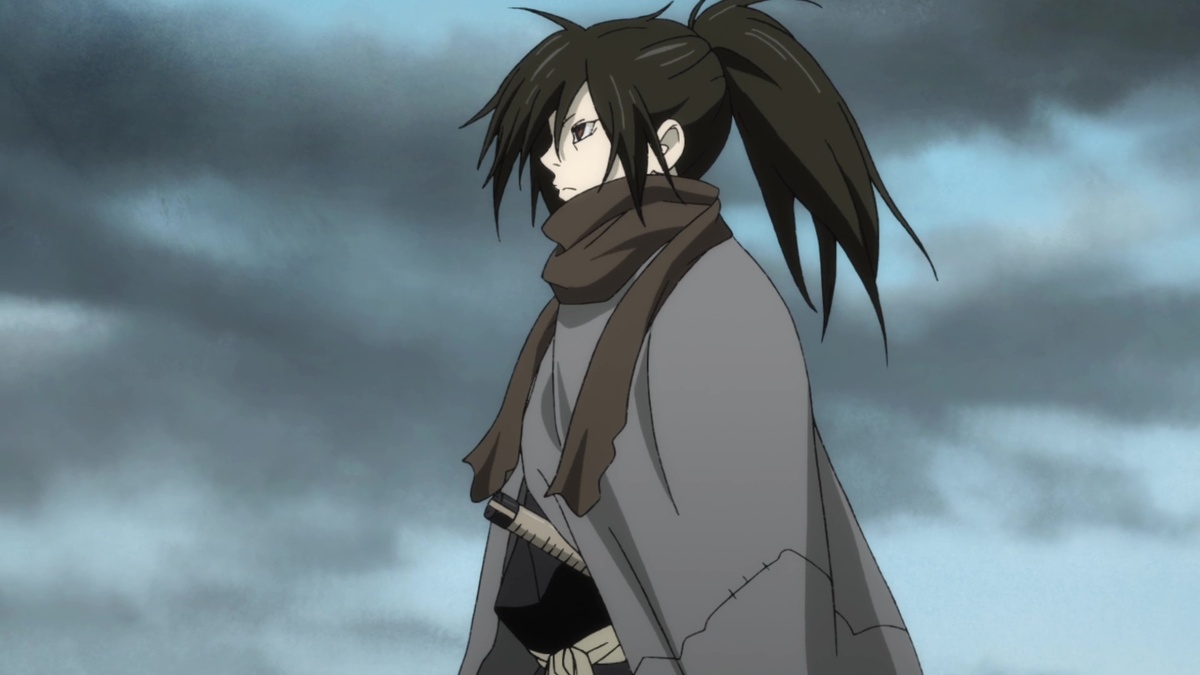
It’s that time of the year again. A new batch of anime is here to entertain, disappoint, and to sometimes even baffle. While the Winter crop doesn’t quite seem to have the same great range of material as the previous season, there are still some very promising new shows, as well as the continuation of one of the best series in recent years. Overall, the proceedings certainly skew towards action, thriller, and mystery stories, with few character dramas to be found. But, there are certainly worse things than an abundance of high octane entertainment. And hey, we have new Mob Psycho, so things certainly can’t be that bad!
Must Watch
Mob Psycho 100 II

Ah Mob, it’s good to have you back. The sequel to 2016’s Mob Psycho 100 is finally upon us, and somehow it already seems like it may surpass the fantastic first season. For those unfamiliar, the show is an action dramedy that adapts a webcomic by ONE, the creator of the popular One Punch Man. The adaptation has been handled by Bones and director Yuzuru Tachikawa (Death Parade). Studio Bones is routinely responsible for some of the best action series in the medium, and Tachikawa directed the vivid Death Parade, an exploration of morality and conscience. With Mob Psycho Season 1 we saw some of the best fight sequences in years, married to excellent characters and a multifaceted deep dive into the concepts of natural talent and self-acceptance. Oscillating between hilarious, cool, and emotionally affecting without a trace of tonal whiplash, the first cour was one of the best anime in years.
While much of the first season concerned Mob’s struggles with his psychic powers and his tendency to bottle up his emotions, the first episode of Season 2 was a cathartic release of this build up. After Mob tries to leave his comfort zone and fails miserably, a girl approaches him to confess her feelings. From there we are treated to a wonderfully empathetic romance tale that adheres to ONE’s basic principle of taking a tried-and-true story template and adding unique deviations of the storytelling norms. It all culminates in a beautiful expression of the show’s philosophy, a dizzying feat of Sakuga that simultaneously ties together the episode’s arc while also building off of all of Mob’s development thus far. Somehow the fluidly animated and well-choreographed opening battle that pitted Mob and his mentor Reigen against a giant plant monster was completely overshadowed by a sequence that tackled a genre the show had never even attempted before.
In large part, this speaks to ONE’s strengths as a writer, as he is able to fluctuate between different genres without ever betraying the core sensibilities of his story. Similarly, the second episode was also a complete genre switch, delving into the horror of urban legends. Balancing terror and comedy with memorable action sequences, we once again received a well-balanced cocktail of tone. As of right now Mob Psycho Season 2 seems to be the runaway show of the season. It marries the beautiful animation we’ve come to expect from Bones with some of ONE’s best writing, resulting in an unmissable action series that deeply cares about Mob’s struggles.
Episode 1 Rating: A+
Episode 2 Rating: A-
The Promised Neverland 
Shonen Jump properties tend to adhere to a somewhat familiar battle-shonen format, a template codified by manga like Dragon Ball. However, the publication will also frequently support stories that significantly deviate from these fun power fantasies. The Promised Neverland Is a great example of this, a series that envisions a tension-filled, high-stakes game of cat and mouse.
The proceedings start out idyllic enough. Emma, Norman, and Ray live together at an orphanage with around 30 other kids. But instead of being a morose Dickensian hovel, their home is welcoming, the children living out their days in relative comfort under the supervision of their surrogate Mother. There is a charming charisma and genuine chemistry that surrounds this group, their carefree existence convincingly sold through small interactions that convey that they view each other as true siblings. But since this isn’t a heart-warming Isekai, we are soon introduced to the conflict. To remain as cryptic as possible, Emma and Norman stumble upon an alarming truth, a ticking time bomb which threatens to undo their happy little existence.
From there begins a high stakes game of chess which pits the ingenuity and natural talents of our three protagonists against a calculating foe with several significant advantages. So far The Promised Neverland does a great job at maintaining a consistent level of tension, both in terms of its overarching tone and from scene to scene. The premise is inherently terrifying, but the true terror lies in the fact that our heroes can never be complacent, as they are always being watched. While Ray’s Spock-like adherence to logic feels somewhat contrived, Norman and Emma are the types of characters that can ground us in the conflict and add stakes. In particular, Emma is the little bastion of humanity that is needed to prevent this dark world from slipping into outright depravity. So far this show is shaping up to be an exciting cerebral thriller, one that is presented like a complex puzzle that will require our protagonist’s utmost ingenuity to overcome. I’m completely hooked.
Episode 1 Rating: B+
Episode 2 Rating: A-
Recommended
Dororo

An unlikely amalgamation of Chanbara and horror, Dororo is a loose adaptation of one of the “god of manga” Osamu Tezuka’s stories. While the original was drawn in Tezuka’s trademark style and was apparently filled with far more levity, MAPPA’s adaptation mixes sleek action, gruesome monstrosities, and a sobering tone. So far this combination is a success, with tension that is genuinely compelling and action sequences that easily rank among the season’s best.
The story takes place in the Sengoku period, a time defined by strife and war. A local daimyo, Daigo Kagemitsu makes a pact with demons so that he may successfully conquer his surrounding territories. The price for this pact is that his first child is born deformed, lacking limbs or a face due to a curse. Sixteen years later a young thief named Dororo has a chance encounter with a skilled ronin. The warrior cuts down a monster with ease, his prosthetic limbs giving way to concealed blades. As the fight concludes the samurai’s mask falls off, revealing a face without skin.
One of the most striking aspects of Dororo is how convincingly it conveys the grave danger of this world. Shots of battlefields depict the utter carnage of the period, the blood-soaked lands littered with samurai corpses. Gruesome monsters rove the land, cutting down innocent passersby. Dororo is almost beat to death by a crew of surly gangsters. MAPPA’s adaptation deviates from the source material entirely, instead depicting grisly body horror and sleekly produced action.
The first big fight scene blends style and realism, simultaneously depicting the weight of sword strikes and gravity while also framing the swordsman Hyakkimaru as an unstoppable force of nature. He moves with supernatural speed and precision, elegantly gliding between his enemies’ blows. And luckily beyond all of its grim trappings, Dororo is a likable protagonist, his quick witticisms covering for Hyakkimaru’s silence. While I’m not sure if this will be enough to maintain my investment in the duo’s adventures, so far the style and tension of Dororo’s first two episodes are enough to keep me intrigued thus far.
Episode 1 Rating: B
Episode 2 Rating: B-
Partial Recommendation
Boogiepop Phantom And Others

Boogiepop can probably be considered one of the most influential works within modern Japanese entertainment, a series of books that popularized the format of light novels altogether. The legendary studio Madhouse is handling the latest adaptation, which follows the plot of the first visual novel. Those familiar with the alienating tone of something like Serial Experiments Lain will feel right at home here, as the first two episodes of Boogiepop Phantom and Others are both terse and unsettling. Taking place at a high school the plot is presented in vague non-linear snippets. There is an evil force preying on members of the student body and a force named Boogiepop is summoned to stop it by taking over the body of one of the students. There are also mentions of government conspiracies, aliens, allusions to Greek mythology, weird drugs, and more.
While the presentation of this story is clearly meant to be confusing, with mysteries belabored by frequent cutting, it is the avant-garde execution that may be the show’s most interesting element. While the first episode of the two-episode premiere is a little too sparse in its explanation of events, the second episode gives enough context to at least somewhat ground the story. Still, the most troubling aspect of the show right now is that due to the lack of chronology, it is hard to follow the arcs and motivations of the protagonists. It’s certainly fine to be flippant about plot details in a mystery story, but it’s essential to have an anchor that lends investment to the mystery in the form of characters. Still, there are enough unique elements surrounding Boogiepop Phantom and Others’ execution that it may be worth sticking around for now.
Episode 1 Rating: C
Episode 2 Rating: B-






